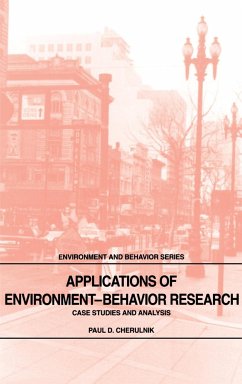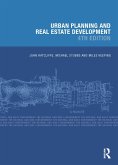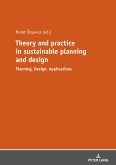Architects, city planners, and other design professionals have used theory and research from psychology and other behavioral sciences to make their work more responsive to the needs of the people who use the buildings, parks, and city streets they help to shape. This book describes in detail thirteen cases in which that approach was followed. It analyzes the use of environmental design research in each case, demonstrating how it has made a positive contribution in these cases and how its use can improve design and planning processes in general and thus the quality of the built and natural environments.
Table of contents:
Part I: Introduction; 1. Preface and introduction; 2. A model of environmental design/planning research (EDR) and a framework for analyzing cases of EDR; Part II: Building Design; 3. Contra Costa County main detention facility; 4. University of Michigan replacement hospital programe; 5. Belchertown State School; 6. Seattle FAA office building; 7. Trinity College dormitory; 8. Sociopetal space in psychiatric hospitals; Part III: Community Planning; 9. Exxon Plaza re-design; 10. Livable streets; 11. Clason Point Gardens; 12. CMUC (MACUL); Part IV: Environmental Management; 13. Energy conservation; 14. San Francisco's 1985 downtown plan; 15. Lower Wisconsin State Riverway; PartV: Conclusion; 16. Epilogue: the past, present, and future of environmental design research'.
Architects, city planners and other design professionals have used theory and research from psychology and other behavioral sciences to make their work more responsive to the needs of people. This study describes in detail thirteen cases in which this approach was followed.
Describes thirteen cases in which architects, city planners and designers used psychological theory and research to make their work more responsive to the needs of people.
Hinweis: Dieser Artikel kann nur an eine deutsche Lieferadresse ausgeliefert werden.
Table of contents:
Part I: Introduction; 1. Preface and introduction; 2. A model of environmental design/planning research (EDR) and a framework for analyzing cases of EDR; Part II: Building Design; 3. Contra Costa County main detention facility; 4. University of Michigan replacement hospital programe; 5. Belchertown State School; 6. Seattle FAA office building; 7. Trinity College dormitory; 8. Sociopetal space in psychiatric hospitals; Part III: Community Planning; 9. Exxon Plaza re-design; 10. Livable streets; 11. Clason Point Gardens; 12. CMUC (MACUL); Part IV: Environmental Management; 13. Energy conservation; 14. San Francisco's 1985 downtown plan; 15. Lower Wisconsin State Riverway; PartV: Conclusion; 16. Epilogue: the past, present, and future of environmental design research'.
Architects, city planners and other design professionals have used theory and research from psychology and other behavioral sciences to make their work more responsive to the needs of people. This study describes in detail thirteen cases in which this approach was followed.
Describes thirteen cases in which architects, city planners and designers used psychological theory and research to make their work more responsive to the needs of people.
Hinweis: Dieser Artikel kann nur an eine deutsche Lieferadresse ausgeliefert werden.








